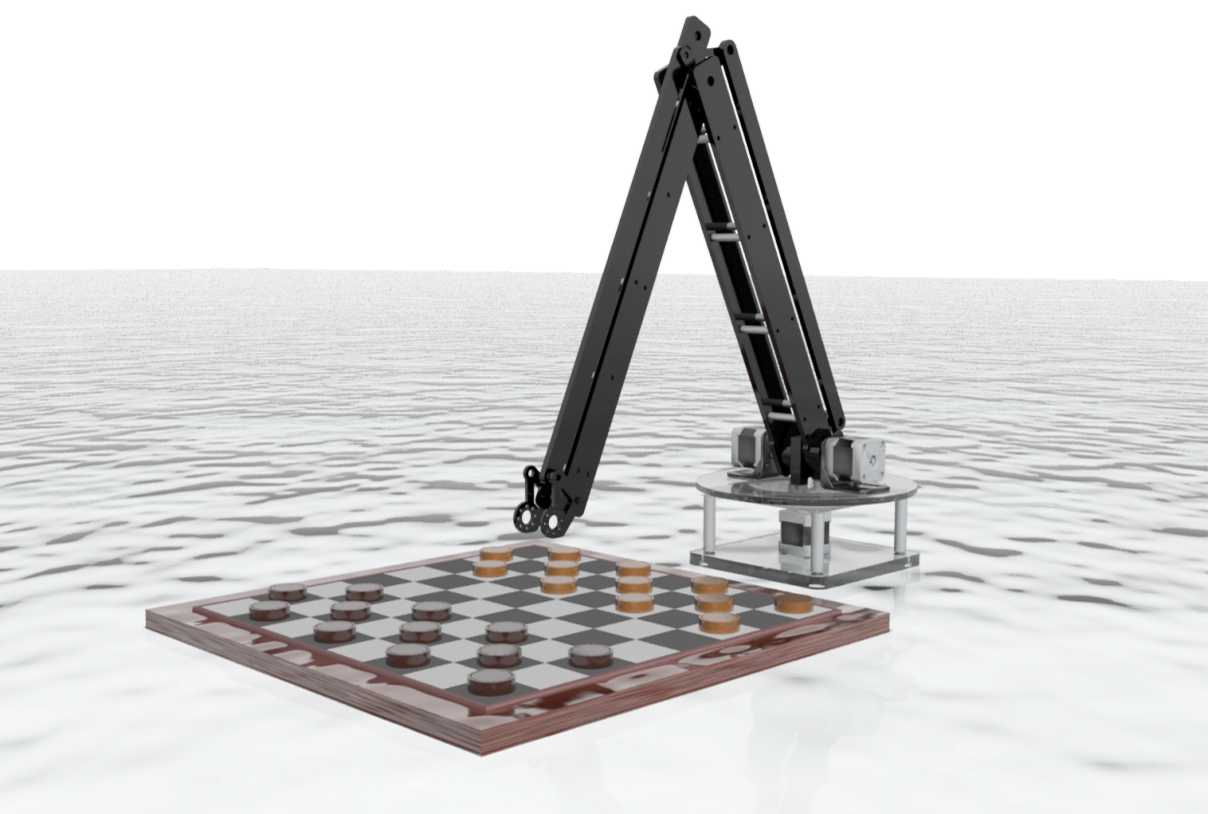
Introduction
In order to demonstrate the precision and versatility of robotics today, we introduce Dum-E, a robotic arm that can play checkers. In the realm of robotics, the day-to-day things that humans can do are difficult to achieve, since every action must be modeled as instructions that the arm can execute. The biomimicry that we strive to achieve with robotics is also very complex. The mechanical aspects of our motions are compound movements that have various ways of being replicated in modern robotics.
Checkers is a familiar game to most people. It’s simple, but contains complicated movements to map onto a robotic system. We are all accustomed to the methodology of playing checkers: we look for a move, think about the outcome, and then eventually play the move and pass the turn. For us, these steps may be simple - but what would a robot need in order to accomplish the same task? On the software side, we must be able to implement computer vision, an AI algorithm, and the kinematics necessary for the arm to move. On the hardware side, we must have a precise device that is able to pick up thin game pieces (that may stack) and move them multiple steps. The arm must be able to reach specific locations in order to move the pieces without interfering with the state of the board. We believe that by achieving success in implementing this robotic arm on both the software and hardware side is sufficient to show the wide array of tasks that Dum-E can achieve.
Dum-E is representative of just a small subsection of robotics. We believe that by bringing Dum-E to life, we will be able to scale it to larger applications such as construction, aerospace, and rescue missions. There are situations and severe environments that cannot sustain human life, and robotic solutions such as Dum-E could revolutionize the industry.